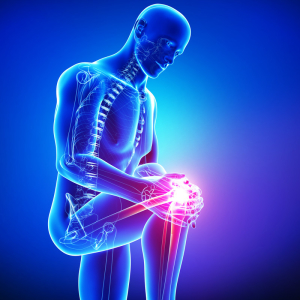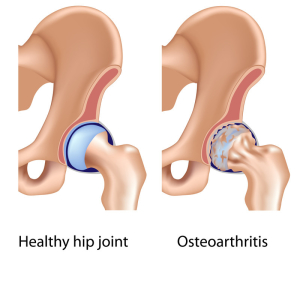FAQs on Joint Pain – Ankle, Shoulder, Hip, and Knee
Joint pain is a common orthopedic problem, and it can occur due to many possible causes. However, joint pain is typically related to an injury or  arthritis. The knee joint is the most frequently injured or damaged joint of the body. In older people, multi-site joint pain is usually associated with osteoarthritis. Sometimes, younger people who are overweight or those who have suffer injuries.
arthritis. The knee joint is the most frequently injured or damaged joint of the body. In older people, multi-site joint pain is usually associated with osteoarthritis. Sometimes, younger people who are overweight or those who have suffer injuries.
What causes joint pain?
Inflammation due to arthritis or injury is the main reason a joint becomes painful. The thick layer of tissue lining the joint becomes inflamed, which can produce stiffness, redness, warmth, and tenderness of the joint.
The joint is usually inflamed due to arthritis or injury. Forms of arthritis that cause joint pain include rheumatoid arthritis, osteoarthritis, reactive arthritis, and psoriatic arthritis.
What conditions are associated with joint pain?
Several conditions are associated with joint pain, such as:
- Gout – This is caused by a build-up of uric acid in the blood stream, which forms crystals in the joints. These crystals lead to painful, inflamed joints. Gout often affects the big toe, but it can occur in any joint. Pseudogout is similar to gout, but it involves build-up of calcium crystals in the joint.
- Chondromalacia patellae – This is a condition associated with kneecap damage.
- Hemarthrosis – This is swelling of the knee associated with bleeding into the joint due to a buildup of blood in the joint space.
- Connective tissue disease – The immune system may attack healthy cells and connective tissue in conditions such as scleroderma or lupus.
How common is joint pain associated with arthritis?
The Centers for Disease Control and Prevention report that the prevalence of arthritis among U.S. adults is 33%. Of those surveyed, over 50% reported chronic joint pain (CJP). In addition, women tend to be afflicted more than men, with all races affected equally.
What are the possible complications of joint pain?
The complications of joint pain are often progressive, varying based on the underlying cause of the pain. Failure to seek medical care could make complications worse. The possible complications include:
- Physical disability
- Joint deformity
- Loss of joint immobility
- Permanent instability and loss of sensation
- Paralysis
How is joint pain treated?
Joint pain treatment depends on what is causing the problem. For chronic, prolonged joint pain, treatment options include:
- Steroid joint injection – A steroid is injected into the joint space to reduce inflammation and swelling. This procedure may also involve the removal of synovial fluid for analysis or to eliminate a painful fluid build-up. In a clinical study of more than 50 participants, steroid injection relieved pain and improve function of the joint for up to 3 months.
- Hyaluronic acid injection – To lubricate the joint space, hyaluronic acid can be injected into the joint. This fluid is similar to the synovial fluid of the joint. In a recent clinical trial, patients with knee arthritis reported improvement of pain and mobility that lasted for more than 4 months after the injection.
- Stem Cell Procedure – Injections of stem cells are becoming mainstream and may provide regeneration and repair of joints damaged by arthritis. Stem cells derived from one’s own bone marrow or even amniotic fluid are seeing success. Both are outpatient and
entail very low risk with a potentially huge upside.
- Bracing – For joint pain associated with arthritis, a knee brace applies a corrective force that maintains normal alignment.
- Medications – Drugs prescribed by pain specialists include nonsteroidal anti-inflammatory drugs (NSAIDs), non-narcotic analgesics, and narcotic pain medicines.
- TENS – Transcutaneous electrical nerve stimulation involves the use of a small battery-operated unit that uses electrical energy to interrupt pain signals that are transmitted to the brain. The unit is worn outside the body. In a 2012 clinical study, TENS was found to have a 75-90% efficacy rate.
- Acupuncture – For chronic joint pain, acupuncture is a popular treatment that involves the insertion of small needles into the skin to promote self-healing from the body. In a recent clinical study, acupuncture was proven to be a cost-effective, safe treatment for chronic knee pain.
Resources
Centers for Disease Prevention and Control (2015). Arthritis data and statistics. Retrieved from: http://www.cdc.gov/arthritis/data_statistics.htm
Hinman RS, McCroy P, Pirotta M, et al. (2012). Efficacy of acupuncture for chronic knee pain: protocol for a randomised controlled trial using a Zelen design. BMC Complement Altern Med, 12(161). doi: 10.1186/1472-6882-12-161.
Jacques L, Jensen T, Rollins J, Burton B, Hakim R, & Miller S (2012). Decision memo for transcutaneous electrical nerve stimulation for chronic low back pain (CAG-00429N). tinyurl.com/ decisionmemoTENS
Lambert RGW, Hutchings EJ, Grace MGA, Jhangri GS, Conner-Spady B, & Maksymowych WP (2007). Steroid injection for osteoarthritis of the hip. A randomized, double-blind, placebo-controlled trial. Arthritis Rheum, 56(7):2278–87. doi: 10.1002/art.22739
Miller, L. & Block, JE (2013). US-approved intra-articular hyaluronic acid injections are safe and effective in patients with knee osteoarthritis: Systematic review and meta-analysis of randomized, saline-controlled trials. Clin Med Insights Arthritis, 6, 57-63. doi: 10.4137/CMAMD.S12743


